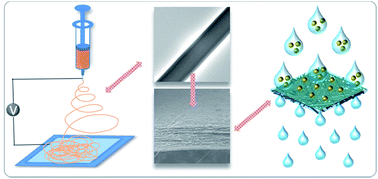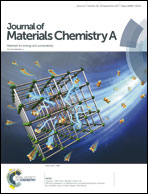A core–shell fiber-constructed pH-responsive nanofibrous hydrogel membrane for efficient oil/water separation†
Abstract
In order to efficiently separate oil/water emulsions and enhance antifouling properties, a core–shell fiber-constructed pH-responsive nanofibrous hydrogel membrane (NHM) was successfully fabricated by a uniaxial electrospinning method. A simple thermal treatment stabilized the core–shell structure and enhanced the tensile stress of the NHMs. When immersed in water, the nanofibrous membrane exhibited a change to a transparent hydrogel membrane. The as-prepared NHMs possess superhydrophilic and underwater superoleophobic properties and can effectively separate various oil/water emulsions in acid, neutral or alkali environments, driven solely by gravity. Interestingly, the pH-responsive properties of the NHMs caused changes in the micromorphology of the nanofibers and the pore sizes of the membranes, which had great influences on the permeating flux (varying from 17 L m−2 h−1 to 1019 L m−2 h−1); moreover, there were no effects on separation performance. Due to their high flux, high separation efficiency (>99%) and excellent recyclability (TOC < 32 ppm after each cycle), these NHMs possess great potential for oily wastewater treatment and resource recycling.



 Please wait while we load your content...
Please wait while we load your content...